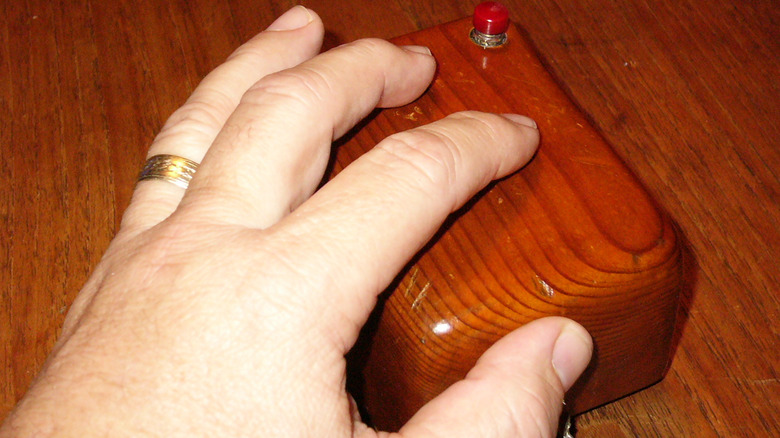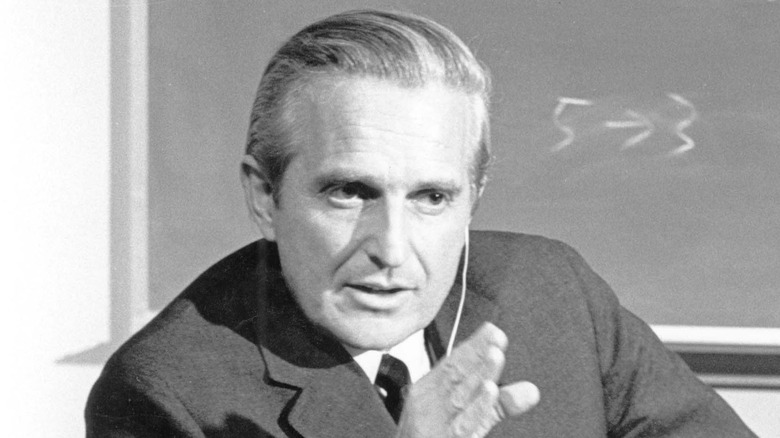The Truth About The Invention Of The Computer Mouse
Where would humanity be, in this brave new world of Internet-connected absolutely everything, without the humble computer mouse? Whether you're using a cheap heck-it's-better-than-a-laptop-touchpad mouse or a high-tech gaming version with umpteen different functions, we all owe a great debt of gratitude to Douglas Englebart. He unveiled the first rudimentary mouse to the world back in 1968.
When computers were in their infancy, they were incredibly unwieldy and difficult to navigate. As Wired reports, various methods of operating them were dreamed up in the 1960s, including a contraption that would've apparently been mounted on users' heads. While that certainly would've been a sight to see, it was probably for the best that Englebart's idea of a control method using hand movements gained traction instead.
Englebart was born in Portland, Oregon, in 1925, per Britannica, and went on to serve in the United States Navy during World War II as a radar technician. He then received a bachelor's degree in electrical engineering in 1948, followed by a doctorate in the very same field seven years later. His goal was to create a way for computer users to easily share information and collaborate on it simultaneously — to be truly connected — and his breakthrough came while he was working at California's Stanford Research Institute.
Before optic mice came wood and wheels
His Augmentation Research Center focused on the dilemma of giving computers (which at the time could only be navigated by special commands, and couldn't display information on a screen as they do now) more utility and making them accessible for non-specialized purposes.
As Center For Computing History tells it, Englebart's first primitive mouse was invented in 1964. The device was incredibly simple, consisting of a circuit board, a heavy wooden body, and a pair of wheels. It would be the forefather of Bill English's model, created in 1972: the classic "ball" mouse that 1990s computer users everywhere will remember, fondly or not.
As reported by Computer World, Englebart demonstrated his mouse to the world at a computing conference in San Francisco in 1968 (also centering around his pioneering work in the field of word processing). So groundbreaking was his display, and his work in advancing computing generally, that this reveal has come to be known as The Mother of All Demos (posted on YouTube). He spoke of "a computer that was alive for you all day and was instantly responsive to every action," and asked, "how much value could you derive from that?" Well, an awful lot, as the decades since have proven.

